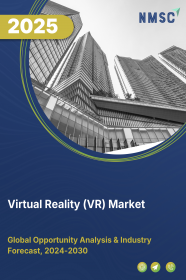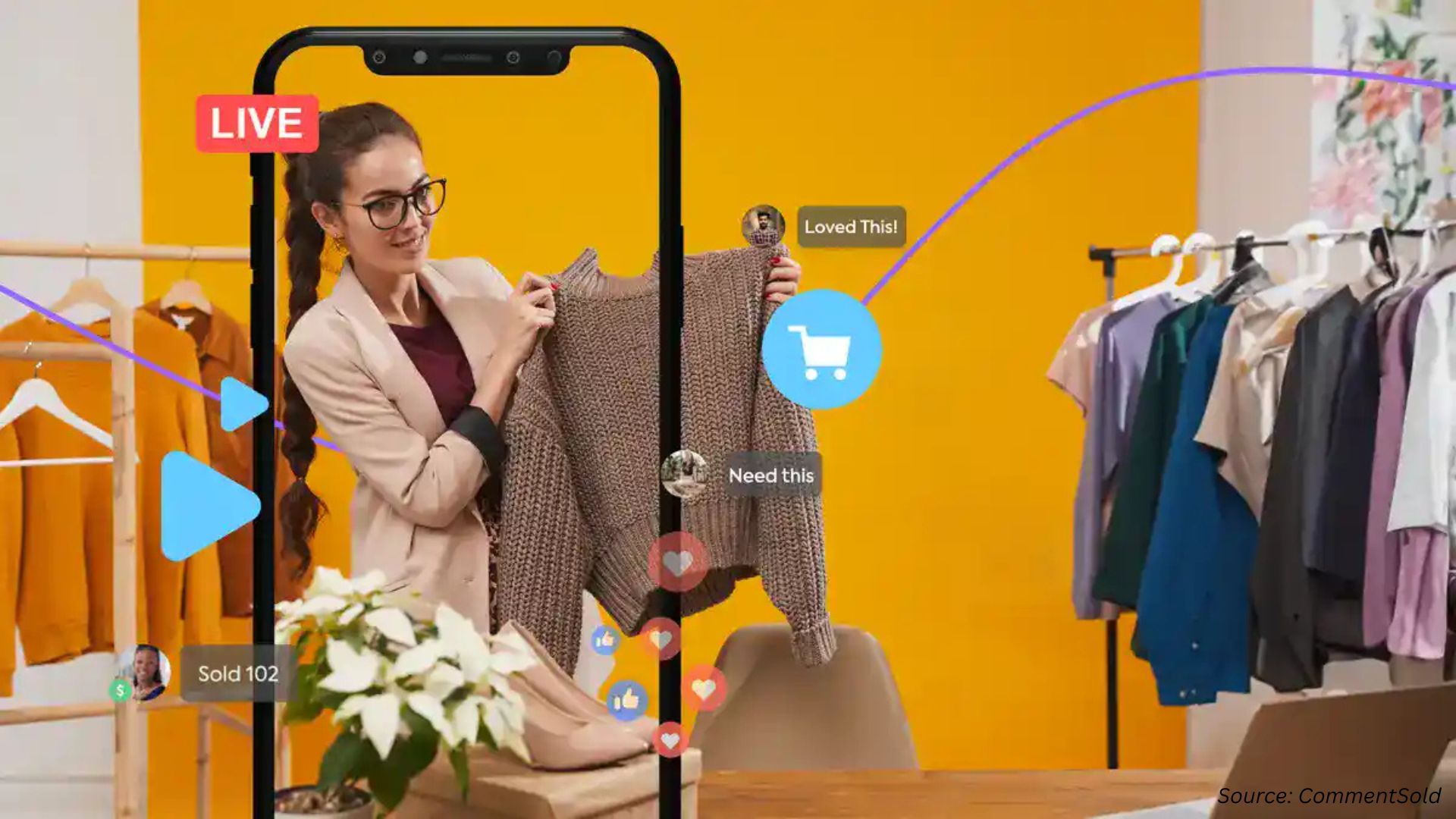
Virtual Reality (VR) Market by by Offering (Hardware, Software), by Device Type (Head-Mounted Displays (HMD), Gesture-Tracking Devices (GTD), Projectors & Display Walls (PDW)), by Technology (Non-Immersive Technology, Semi-Immersive and Fully Immersive Technology), by Application (Commercial/Enterprise, Industrial) – Global Opportunity Analysis and Industry Forecast 2024-2030
Market Definition
The global Virtual Reality (VR) Market size was valued at USD 28.78 billion in 2023 and is predicted to reach USD 192.99 billion by 2030 with a CAGR of 26.8% from 2024-2030. Virtual Reality (VR) is an immersive technology that simulates a three-dimensional, computer-generated environment, enabling users to interact with and explore a digital world. VR works by using specialized hardware, such as headsets and motion-tracking sensors, to create a computer-generated, three-dimensional environment.
When a user wears the VR headset, it tracks their head and body movements, rendering corresponding changes in the digital world, which is then displayed through the headset, providing a highly immersive experience that simulates a different reality.
Virtual Reality (VR) offers numerous advantages, including its ability to provide immersive, realistic simulations for training and education, enhancing learning and skill development. It also has vast potential in the fields of medicine, architecture, and entertainment, offering innovative ways to visualize complex concepts and provide engaging interactive experiences.
Market Dynamics and Trends
The increasing popularity of VR gaming along with VR tournaments that offer immersion and interactivity that traditional gaming cannot provide, is driving the VR market growth. VR tournaments offer a unique platform for social interaction, allowing participants to connect globally, which is further increasing its popularity among consumers. For instance, in June 2023, Tennis Canada announced an esports tournament called the Tennis Canada VR Tournament. The tournament was open to all interested players, who owned a VR headset and equipment with a prize pool of USD 10,926.
Moreover, the increasing use of VR by the military for training and simulation purposes, which results in cost savings and improved performance analysis of soldiers, is further propelling the growth of the market. For instance, in July 2023, The US Army announced that they aim to invest in Microsoft's Integrated Visual Augmentation System (IVAS), which is a mixed reality headset designed for combat situations. The Army plans to spend up to USD 21.9 billion on this project which will undergo testing in 2025 for use in combat operationss. IVAS is a single platform that features an all-weather fighting goggles and a mixed-reality heads-up display. It integrates next-generation situational awareness tools and high-resolution simulations to provide soldiers with improved mobility and lethality, during the day or at night.
However, the high cost associated with VR headsets and the low availability of VR content is restraining the growth of the market during the forecast period. On the other hand, the introduction of 5G technology that promises ultra-fast connectivity and low latency is expected to create ample growth opportunities for the market players in the upcoming years. This advanced network technology is set to revolutionize various industries by enabling real-time, high-quality VR experiences, which can range from seamless remote collaboration and entertainment to enhanced healthcare and industrial applications.
Market Segmentations and Scope of the Study
The virtual reality market report is segmented based on components, technology, user interfaces (UI), applications and regions. Based on components, the market is divided into hardware, and software. The hardware segment is further divided into VR headsets and VR accessories. On the basis of technology, the market is categorized into semi & fully immersive and non-immersive VR experiences. Based on User interface the market is categorized into hand gestures, voice commands, controllers & touch interfaces, brain-computer interfaces (BCI), and others. On the basis of application, the market is classified into gaming and entertainment, healthcare and medical, education and e-learning, architectural and real estate visualization, retail and e-commerce, marketing and advertising, automotive and aerospace design, and other applications. The regional breakdown and analysis of each of the aforesaid segments includes regions comprising of North America, Europe, Asia-Pacific, and Rest of the World (RoW).
Geographical Analysis
North America held the dominant share of the VR market and is expected to continue its dominance during the forecast period. This is attributed to factors such as the growing adoption of virtual reality simulations in healthcare as it aids in medical training and surgical procedures. The region benefits from a well-established healthcare sector and a strong focus on technological innovation, which facilitated the integration of VR into medical education and practice.
Moreover, the presence of major VR technology companies such as Meta and google along with the high disposable income of consumers have driven the widespread use of VR applications in education, gaming and entertainment. For instance, in June 2023, Meta announced the release of its next-generation virtual and mixed reality headset called Meta Quest 3, which will be available at the end of 2023 for consumers. The headset is designed to deliver both cutting-edge VR and MR experiences in a single device and a slimmer, more comfortable form factor than its predecessor. The device also features higher resolution, better performance and latest Meta Reality technology.
On the other hand, Asia-Pacific is expected to show a steady rise in the VR market demand due to the increasing adoption of in VR technology by the military and defence in countries such as China and India. These nations are actively working with regional VR startups to advanced military training and simulation programs to prepare their armed forces for a wide range of scenarios, in turn driving the growth of the market. For instance, in 2022, India’s military collaborated with a VR startup named AjnaLens. Under this collaborations Indian military will use Ajnalens VR headsets for various operations such as equipment familiarization, immersive combat training, and mental resilience training. Moreover, the surging adoption of VR technology in theme parks and tourist destinations across the Asia-Pacific region to offer immersive and captivating experiences to tourists, is further driving the growth of the market.
Competitive Landscape
The VR industry comprises of various players such as Sony Corporation, Samsung Electronics Co., Ltd., Microsoft Corporation, Meta Corporation, HTC Corporation, Barco, PICO Immersive Pte.ltd. , CyberGlove Systems Inc., Unity Technologies, Penumbra, Inc., DPVR, Ultraleap, FOVE Inc., Quy Technology Pvt. Ltd., and HQ Software Inc. These market players are adopting various strategies such as product launch to maintain their dominance in the global market.
For instance, in February 2023, Sony unveiled the PlayStation VR2, its next-generation virtual reality system designed to seamlessly integrate with the PlayStation 5 console. The comprehensive PSVR 2 package includes the sleek PS VR2 headset, innovative PS VR2 Sense controllers, and high-fidelity stereo headphones, providing an immersive and engaging VR experience.
Moreover, in January 2023, HTC unveiled the VIVE XR Elite, an all-in-one XR headset that seamlessly blends the immersive capabilities of virtual reality (VR) with the interactive elements of mixed reality (MR). This versatile device redefines the boundaries of XR experiences, catering to a wide range of applications, including gaming, fitness, and productivity.
Key Benefits
-
The VR market report provides the quantitative analysis of the current market and estimations from 2024 to 2030. This analysis assists in identifying the prevailing market opportunities to capitalize on.
-
The study comprises of a detailed analysis of the VR market trends including the current and future trends for depicting the prevalent investment pockets in the market.
-
The information related to key drivers, restraints, and opportunities and their impact on the VR market is provided in the report.
-
The competitive analysis of the market players along with their market share in the VR market is mentioned.
-
The SWOT analysis and Porter’s Five Forces model are elaborated in the study.
-
The value chain analysis in the market study provides a clear picture of the stakeholders’ roles.
Virtual Reality (VR) Market Key Segments
By Offering
-
Hardware
-
Sensors
-
Accelerometers
-
Gyroscopes
-
Magnetometers
-
Proximity Sensors
-
-
Semiconductor Components
-
Controllers and Processors
-
Integrated Circuits
-
-
Display and Projectors
-
Position Tracker
-
Cameras
-
Other Hardware Components
-
-
Software
-
Software Development Kit (SDK)
-
Cloud-based Services
-
By Device Type
-
Head-Mounted Displays (HMD)
-
Gesture-Tracking Devices (GTD)
-
Projectors & Display Walls (PDW)
By Technology
-
Non-Immersive Technology
-
Semi-Immersive and Fully Immersive Technology
By Application
-
Commercial/Enterprise
-
Retail and E-Commerce
-
Education and Training
-
Travel and Tourism
-
Media and Advertising
-
Other Commercial Applications
-
-
Industrial
-
Healthcare
-
Aerospace & Defence
-
Automotive
-
Construction
-
Other Industrial Applications
-
By Region
-
North America
-
The U.S.
-
Canada
-
Mexico
-
-
Europe
-
The UK
-
Germany
-
France
-
Italy
-
Spain
-
Denmark
-
Netherlands
-
Finland
-
Sweden
-
Norway
-
Russia
-
Rest of Europe
-
-
Asia-Pacific
-
China
-
Japan
-
India
-
South Korea
-
Australia
-
Indonesia
-
Singapore
-
Taiwan
-
Thailand
-
Rest of Asia-Pacific
-
-
Rest of the World (RoW)
-
Latin America
-
Middle East
-
Africa
-
Key Players
-
Sony Corporation
-
Samsung Electronics Co., Ltd.
-
Microsoft Corporation
-
Meta Corporation
-
HTC Corporation
-
Barco
-
PICO Immersive Pte.ltd.
-
CyberGlove Systems Inc.
-
Unity Technologies
-
Penumbra, Inc.
-
DPVR
-
Ultraleap
-
FOVE Inc.
-
Quy Technology Pvt. Ltd,
-
HQ Software Inc.
Report Scope and Segmentation
|
Parameters |
Details |
|
Market Size in 2023 |
USD 28.78 Billion |
|
Revenue Forecast in 2030 |
USD 192.99 Billion |
|
Growth Rate |
CAGR of 26.8% from 2024 to 2030 |
|
Analysis Period |
2023–2030 |
|
Base Year Considered |
2023 |
|
Forecast Period |
2024–2030 |
|
Market Size Estimation |
Billion (USD) |
|
Growth Factors |
Increasing popularity of VR gaming along with VR tournaments that offer immersion and interactivity. Increasing use of VR by the military for training and simulation purposes, which results in cost savings and improved performance analysis of soldiers. |
|
Countries Covered |
28 |
|
Companies Profiled |
15 |
|
Market Share |
Available for 10 companies |
|
Customization Scope |
Free customization (equivalent to up to 80 working hours of analysts) after purchase. Addition or alteration to country, regional, and segment scope. |
|
Pricing and Purchase Options |
Avail customized purchase options to meet your exact research needs. |




















 Speak to Our Analyst
Speak to Our Analyst

























